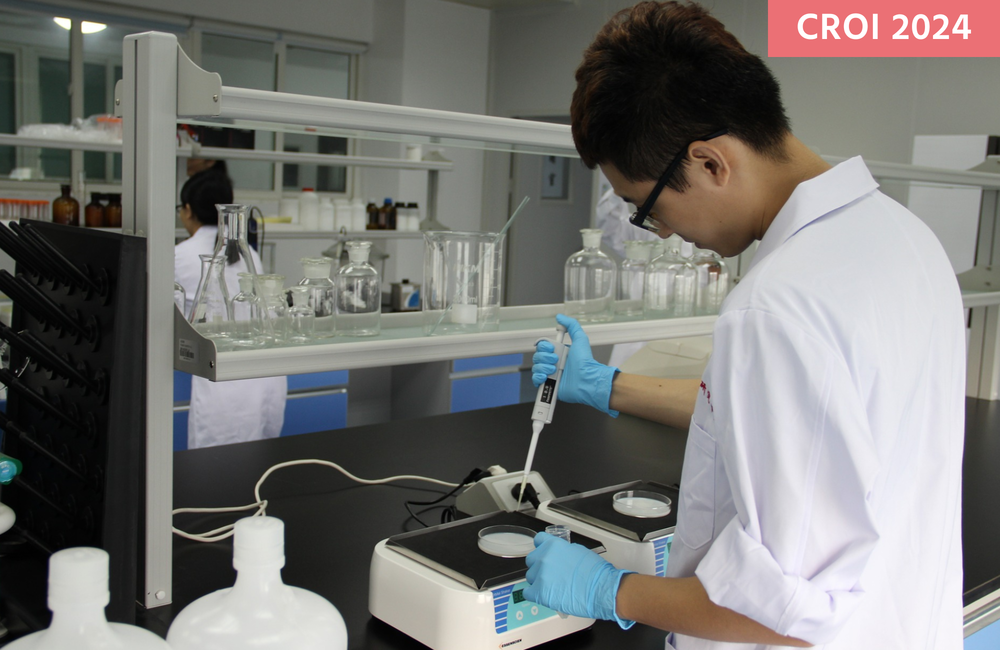
Analysis of tissue samples from six people with HIV who passed away due to terminal illness revealed varying concentrations of dolutegravir in different body sites and organs. Unsurprisingly, drug concentrations in the brain and the spinal cord were lower than in other body sites, but concentrations across different parts of the brain were evenly distributed. In contrast, the intestines and the spleen – where a large portion of the immune system resides – were found to have high drug concentrations. Dr Micol Ferrara and colleagues shared these findings in a poster at the Conference on Retroviruses and Opportunistic Infections (CROI 2024) held in Denver this week.
The central nervous system (the brain and the spinal cord) is separated from the body by the so-called blood-brain barrier which makes it notoriously difficult to be reached by many drugs. Although dolutegravir is very effective at suppressing HIV, variability in its concentrations may affect how well it reaches and suppresses the virus in its hiding places (reservoir) in the central nervous system.
Additionally, although based on a very small sample size, the analysis seems to reveal a large inter-individual difference in tissue drug concentrations. Inter-individual difference is a measure that compares drug concentrations of the same drug in different people and looks at how much they vary from one person to another. A large inter-individual difference in drug concentrations is undesirable of a drug since it can lead to very low or high concentrations in some people.
The study
A joint team of Italian and American researchers looked at drug concentration in tissue samples collected from six people with HIV who passed away due to terminal illness. Prior to death, all six donors were on a dolutegravir-based therapy. Within six hours of death, 22 tissue samples from different body sites were collected from each person and analysed.
All six donors were above 50 years of age and prior to death, they had suppressed virus and a mean CD4 count of 277. Their time on dolutegravir-based therapy ranged from two months to nearly three years.
Drug distribution across tissues
Drug distribution is a key feature of drugs that centres on how well a drug reaches its target anatomical sites. In the case of HIV, a desirable drug distribution is when the drug reaches optimal concentrations in immune tissues and HIV reservoirs.
The central nervous system is one of the HIV reservoirs, however, most drugs cannot reach the same concentrations in this site as they do in the rest of the body. This is due to the protective blood-brain barrier.
The drug concentrations in this study were measured as nanograms of the drug per gram of sampled tissue. The concentrations of dolutegravir in different compartments of the central nervous system were even but more than tenfold lower than in the intestines ranging from 24 to 63 ng/g. In the intestines and the spleen, two major sites of the immune system, as well as in the kidneys and the liver, dolutegravir reached its highest concentrations ranging from 514 to 945 ng/g on average.
In fat tissues, the lungs, pancreas and heart, the concentrations were still high ranging from 281 to 399 ng/g.
Additionally, two donors had also had rilpivirine or darunavir in their regimen which allowed for the sampling of these drugs‘ distributions. Both drugs were found to reach their highest concentrations in the liver and intestines.
Takeaway
In HIV treatment, drug concentration often correlates with viral suppression and below-optimal concentrations may lead to treatment failure. Due to physiological differences in different organs and organ systems, drugs usually accumulate at varying concentrations in each body site. While it is essential to understand the distribution of each HIV drug in order to know whether it reaches sufficient concentrations in the target tissues, it is very difficult or even impossible to take samples from some anatomical sites such as the central nervous system while people are alive.
This is why the six people who agreed to donate tissue samples after death have made a significant contribution to the advancement of our understanding of HIV and its treatment.
Meanwhile, the study team is still seeking future tissue donors who live in or near San Diego, California for similar and further HIV research. If you want to find out more, visit the website of the Last Gift initiative.
Ferrara M et al. Antiretroviral Concentrations in Post-Mortem Tissues: Preliminary Results From the Last Gift Program. Conference on Retroviruses and Opportunistic Infections, Denver, abstract 608, 2024.
